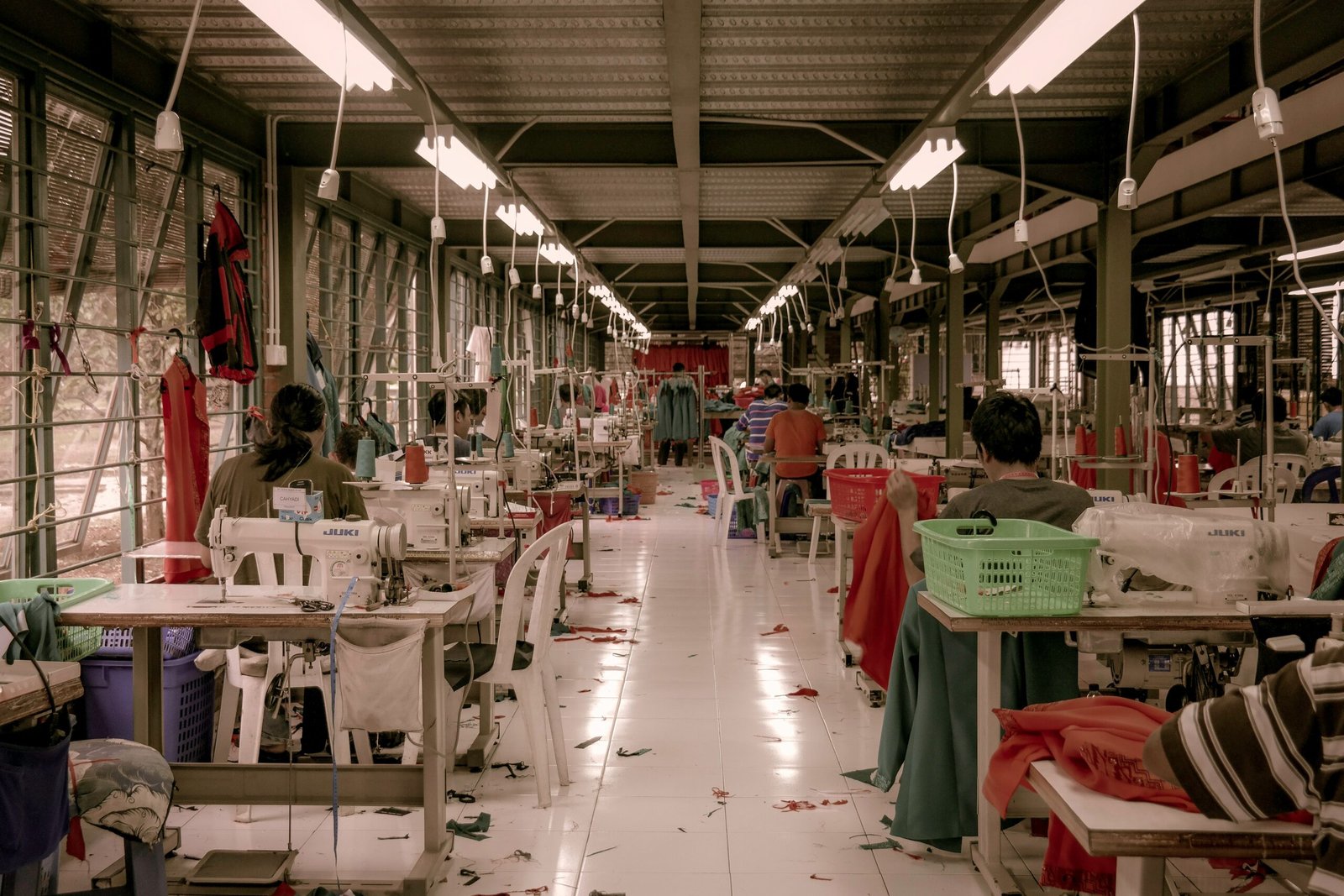
Future Outlook and Challenges in the Fashion Industry
The fashion industry is constantly evolving, driven by changing consumer preferences, technological advancements, and global economic trends. As we look towards the future, there are several key areas that will shape the industry’s trajectory. In this blog post, we will explore the future outlook and challenges in sustainable development, transformation in the fashion industry, forecasting emerging trends, and the impact of social media.
Sustainable Development
One of the most pressing challenges facing the fashion industry is the need for sustainable development. With growing concerns about climate change and environmental degradation, consumers are demanding more transparency and accountability from fashion brands. In response, many companies are adopting sustainable practices throughout their supply chains, from sourcing raw materials to manufacturing and distribution. However, there is still a long way to go in terms of achieving true sustainability in the fashion industry. Challenges such as reducing carbon emissions, minimizing waste, and promoting ethical labor practices remain significant hurdles that need to be addressed.
Transformation in the Fashion Industry
The fashion industry is undergoing a transformative phase, driven by technological advancements and changing consumer behaviors. The rise of e-commerce has disrupted traditional retail models, forcing brands to adapt to the digital landscape. Online shopping has become increasingly popular, with consumers seeking convenience and personalized experiences. As a result, fashion brands are investing in innovative technologies such as virtual reality (VR) and augmented reality (AR) to enhance the online shopping experience. Additionally, the integration of artificial intelligence (AI) and machine learning is revolutionizing various aspects of the industry, from trend forecasting to supply chain management.
Forecasting Emerging Trends
In an industry as fast-paced as fashion, staying ahead of emerging trends is crucial for brands to remain competitive. However, accurately predicting trends can be challenging, as consumer preferences are constantly evolving. To address this, fashion companies are leveraging data analytics and consumer insights to forecast trends more effectively. By analyzing social media trends, online search patterns, and purchasing behavior, brands can gain valuable insights into what consumers want and tailor their offerings accordingly. Additionally, collaborations with influencers and celebrities play a significant role in shaping trends and driving consumer demand.
The Impact of Social Media
Social media has revolutionized the way we consume and interact with fashion. Platforms like Instagram, TikTok, and Pinterest have become powerful tools for brands to showcase their products and connect with consumers directly. Influencers and fashion bloggers have also gained significant influence, shaping consumer preferences and driving trends. However, the rise of social media has also brought challenges, such as the spread of counterfeit goods and the pressure for brands to constantly produce new content. Additionally, social media has given rise to a more inclusive and diverse fashion landscape, with consumers demanding representation and authenticity from brands.
In conclusion, the future of the fashion industry is both exciting and challenging. Sustainable development, transformation through technology, accurate trend forecasting, and the impact of social media are all key factors that will shape the industry’s trajectory. As brands navigate these challenges, it is crucial to prioritize transparency, innovation, and consumer-centric approaches to stay relevant in an ever-changing market.
Sustainable Development: The Way Forward
In recent years, sustainability has become a major focus in the fashion industry. With growing concerns about the environmental impact of fast fashion and the exploitation of labor, consumers are demanding more sustainable and ethical practices from brands. As a result, many fashion companies are now adopting sustainable strategies to meet these demands.
One of the key challenges in sustainable development is the need to reduce the industry’s carbon footprint. This can be achieved through various initiatives, such as using eco-friendly materials, implementing energy-efficient production processes, and reducing waste. Brands are also exploring circular economy models, where products are designed to be recycled or reused, minimizing the use of virgin resources.
Another aspect of sustainable development is ensuring fair labor practices throughout the supply chain. This includes providing safe working conditions, fair wages, and respecting workers’ rights. Brands are increasingly partnering with ethical suppliers and implementing transparency measures to ensure that their products are produced in an ethical manner.
While progress has been made in the sustainability space, there are still challenges to overcome. Scaling up sustainable practices across the industry and educating consumers about the importance of sustainable fashion are ongoing challenges. Additionally, the cost of sustainable materials and production processes can be higher, making it a barrier for smaller brands. However, with increasing consumer demand and government regulations, it is expected that sustainable practices will become the norm in the future.
In order to address these challenges, industry collaborations and technological advancements are crucial. Collaborations between brands, suppliers, and organizations can foster knowledge sharing and innovation, leading to the development of more sustainable solutions. For example, the Sustainable Apparel Coalition brings together brands, retailers, and suppliers to measure and improve their environmental and social performance. Such collaborations enable the industry to collectively work towards a more sustainable future.
Technological advancements also play a significant role in driving sustainability in the fashion industry. Innovations in materials science, such as the development of bio-based and recycled fibers, offer alternatives to traditional materials that have a lower environmental impact. Additionally, advancements in manufacturing processes, such as digital printing and 3D knitting, can reduce waste and energy consumption.
Furthermore, consumer education and awareness are crucial for the success of sustainable development in the fashion industry. Brands can play a key role in educating consumers about the environmental and social impact of their purchasing decisions. This can be done through transparent communication about the sustainability initiatives undertaken by the brand, as well as providing information about the lifecycle of products and how to care for them in a sustainable manner.
Overall, sustainable development is the way forward for the fashion industry. By adopting sustainable strategies, reducing the carbon footprint, ensuring fair labor practices, and embracing technological advancements, the industry can move towards a more sustainable and ethical future. With the collective efforts of brands, consumers, and stakeholders, sustainable fashion can become the new norm, paving the way for a more environmentally conscious and socially responsible industry.
Furthermore, technology has not only transformed the design and marketing processes but has also revolutionized the production and supply chain in the fashion industry. Automation and robotics have made their way into factories, leading to increased efficiency and reduced labor costs. This has enabled brands to produce garments at a faster pace while maintaining high quality.
Moreover, the rise of sustainable fashion has also contributed to the transformation of the industry. With growing awareness about the environmental impact of the fashion industry, consumers are demanding more sustainable and ethical practices. Brands are now incorporating eco-friendly materials, such as organic cotton and recycled fabrics, into their collections. They are also implementing fair trade practices and ensuring transparency in their supply chains.
Another significant change in the fashion industry is the shift towards a more circular economy. Instead of the traditional linear model of “take-make-dispose,” brands are now embracing a circular approach, which focuses on reducing waste and maximizing the lifespan of garments. This includes initiatives such as clothing rental services, clothing swaps, and recycling programs.
Furthermore, the fashion industry is also embracing technology to improve the overall shopping experience for consumers. Augmented reality (AR) and virtual reality (VR) are being used to create immersive and interactive shopping experiences, allowing customers to virtually try on clothes and accessories before making a purchase. This not only enhances convenience but also reduces the need for physical retail spaces.
In conclusion, the fashion industry is undergoing a significant transformation driven by technological advancements and changing consumer behavior. From design and production to marketing and retail, technology has revolutionized various aspects of the industry. Additionally, the rise of sustainable fashion and the shift towards a circular economy are reshaping the way brands operate. With consumers demanding more personalized and ethical experiences, fashion brands are adapting to meet these changing needs. The future of the fashion industry lies in embracing technology, sustainability, and inclusivity to create a more innovative and responsible industry.
Forecasting Emerging Trends
Forecasting emerging trends is a crucial aspect of the fashion industry, as it allows brands to stay ahead of the curve and meet consumer demands. Traditionally, trend forecasting relied on industry experts and fashion shows to identify upcoming trends. However, with the rise of social media and fast fashion, trends are now changing at a faster pace.
Today, trend forecasting is a combination of data analysis, consumer insights, and creative intuition. Brands are using advanced analytics tools to analyze social media data, search trends, and sales data to identify emerging trends. They are also collaborating with influencers and trendsetters to gain insights into consumer preferences.
Another emerging trend in trend forecasting is sustainability-focused trends. As consumers become more conscious about the environmental impact of their fashion choices, brands are looking for ways to incorporate sustainability into their collections. This includes using eco-friendly materials, promoting upcycling and recycling, and embracing slow fashion principles.
However, forecasting emerging trends is not without its challenges. The fast-paced nature of the fashion industry makes it difficult to predict trends accurately. Additionally, the increasing influence of social media and fast fashion has led to a saturation of trends, making it harder for brands to stand out.
Despite these challenges, advancements in technology have also opened up new opportunities for trend forecasting. Artificial intelligence and machine learning algorithms can now analyze vast amounts of data and identify patterns that humans may miss. This allows brands to make more informed decisions and anticipate trends before they become mainstream.
Furthermore, the COVID-19 pandemic has had a significant impact on the fashion industry and trend forecasting. As people’s lifestyles and priorities have shifted, so have their fashion choices. Brands now have to consider factors such as remote work, athleisure wear, and the rise of online shopping when forecasting emerging trends.
In conclusion, the future of the fashion industry will be shaped by sustainable development, transformation driven by technology and changing consumer behavior, and the ability to accurately forecast emerging trends. Brands that embrace sustainability, leverage technology, and understand consumer preferences will be well-positioned to thrive in this ever-evolving industry.

